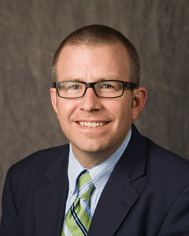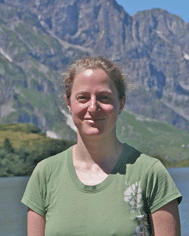Emerging Investigators themed issue 2012
David Cwiertny and Tamar Kohn
 David Cwiertny | David Cwiertny was born in Fountain Valley, California, United States of America in 1978. He received his PhD in Environmental Engineering from Johns Hopkins University in Baltimore, Maryland, USA in 2005. He also received a BS in Environmental Engineering Science with a minor in Chemistry from the University of California, Berkeley in 2000. In the fall of 2011, he joined the Department of Civil and Environmental Engineering at the University of Iowa as an Assistant Professor after serving four years in the same capacity at the University of California, Riverside. His research group broadly focuses on pollutant fate in natural and engineered systems, with a particular emphasis on the development of materials-based treatment technologies that promote water sustainability. At the University of Iowa, he is a core faculty member in the campus-wide Water Sustainability Initiative, developing interdisciplinary research, outreach and education programs intended to increase water awareness at the University and across the state of Iowa. |
 Tamar Kohn | Tamar Kohn was born in Switzerland in 1973. She received a MSc in Environmental Sciences from ETH in Zürich, Switzerland in 1999, and her PhD in Environmental Engineering from Johns Hopkins University in Baltimore, USA in 2004. After a postdoc at UC Berkeley, she joined the École Polytechnique Fédérale de Lausanne (EPFL) in 2007 as an assistant professor. Her current research interests include environmental chemistry, in particular photodegradation of pharmaceuticals and their metabolites; analytical chemistry; environmental virology; and disinfection. |
We are pleased to serve as guest editors for this themed issue on “Emerging Investigators”. Last year we were invited to contribute to the inaugural “Emerging Investigators” issue, a unique opportunity that has provided positive feedback and increased visibility for our research programs. Indeed, a recurring special issue highlighting the research of the best and brightest young minds in environmental science and engineering is an excellent tradition, and the Journal of Environmental Monitoring (JEM) staff are to be commended for their efforts to recognize and promote tomorrow's leaders. For the young investigators, this issue provides a unique venue to showcase their research and increase their profiles at a critical juncture in their early career development. For the JEM audience at large, we hope this issue will serve as a resource for identifying the freshest talent in an ever-evolving and -expanding field of interdisciplinary study.
The contributors to this issue, as well as the cadre of young environmental scientists and engineers around the globe, are of utmost importance in shaping the future of our discipline. Compared to most fields, environmental science and engineering is in its adolescence. Many of our early pioneers are still practising or have only recently retired. The onus is now shifting to young scientists and engineers, these so-called emerging investigators, to continue their mission and honor their legacy. Today, however, successful young investigators must not only conduct research at a high level but also effectively market their work to funding agencies, communicate outcomes to their peers and stakeholders, and defend their interests and efforts in the face of an increasingly skeptical public. Having interacted extensively with the contributors to this issue over the past year, we can say with confidence that these emerging investigators recognize their role and are up to the challenges of tomorrow.
And the challenges are steep. Never before have environmental scientists and engineers been more critical to sustainable global development. As society confronts grand challenges in climate change, access to safe and clean air and water resources, management of nutrients, the control of emerging infectious disease, the energy–water nexus, and other as yet unforeseen threats to environmental quality, environmental scientists and engineers must provide a sustainable path forward. The contributors to this issue reflect the diversity and scale of these challenges. We boast contributions focusing on atmospheric chemistry, novel disinfection challenges, water and wastewater management, pollutant fate and transport in natural systems, analytical methods and sensor development for environmental quality monitoring, and the burgeoning field of environmental nanotechnology. Our contributors come from 3 continents, reflecting not only the globalization of our field but also the universal nature of these environmental challenges. Our contributors also symbolize the diversity of the new generation of environmental scientists and engineers, and we are pleased to participate in a field that welcomes all genders, ethnicities and backgrounds.
In the face of these challenges, we as early career researchers in environmental science and engineering nevertheless remain encouraged by the tremendous opportunities of tomorrow. We see a field that fosters cooperation with other science and engineering disciplines, realizing the value of interdisciplinary work in moving towards a more sustainable society. We see a field in which investigators can embrace globalization and pursue international collaboration, recognizing that sustainability is a common goal that links us all. We see a new generation of scientists, uniquely positioned through social media to create a better informed citizenry with greater awareness of their relationship with the environment and the importance of this relationship in their everyday lives. While the challenges may be steep for young environmental scientists and engineers, we remain optimistic. This themed issue represents a glimpse of tomorrow, and we believe the future is bright indeed.
| This journal is © The Royal Society of Chemistry 2012 |
